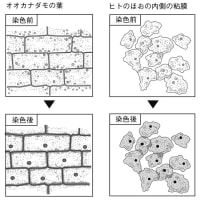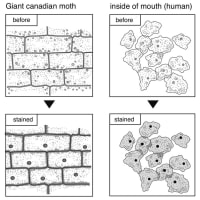生物のからだを構成する細胞は1つ1つが生きて活動している。
活動するためのエネルギーは、細胞内で酸素を使って栄養分を分解することで得ている。
このようなエネルギーを取り出すはたらきを細胞呼吸と呼んでいる。
ここでいう栄養分とは炭水化物やタンパク質、脂肪のような有機物であり、炭素と水素を含んでいる。
栄養分が細胞呼吸によって分解された後は、二酸化炭素と水が残る。
Each cell that makes up the body of an organism is alive and active.
Energy for activity is obtained by breaking down nutrients using oxygen inside the cells.
This process of extracting energy is called cellular respiration.
Nutrients here are organic substances such as Carbohydrates, Proteins, and Fats, which contain Carbon and Hydrogen.
Carbon dioxide and Water remain after nutrients are broken down by cellular respiration.
植物は日光を受けてデンプンをつくり、栄養分にしている。(光合成)
動物は、有機物を食物として取り入れることで、栄養分にしている。
Plants receive sunlight to produce a starch and use it as a nutrient.(Photosynthesis)
Animals take in organic substances as foods and use it as nutrients.
単細胞生物では、1つの細胞に食物を直接体外(細胞外)から取り入れたり、排出したりする仕組みが備わっている。
多細胞生物では、からだの部分によって細胞の役割が分かれており、それぞれ栄養分を取り入れる仕組みや排出の仕組み、それらを運ぶ仕組みが発達している。
しかし、1つ1つの細胞に共通しているのはそれぞれ細胞呼吸によってエネルギーを取り出している点である。
In unicellular organisms, a single cell has a mechanism for taking in and expelling food directly from outside the body or cell.
In multicellular organisms, the roles of cells are divided according to the parts of the body, and each cell has developed its own mechanisms for taking in nutrients, expelling them, and transporting them.
However, each cell has one thing in common: each extracts energy through cellular respiration.




















※コメント投稿者のブログIDはブログ作成者のみに通知されます